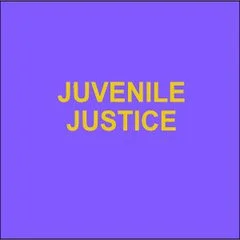By Jasmine J. Jackson, Amber Nogelmeier, and Erica Bower, with assistance from Valerie Meade and Amanda Coscia
The intended purpose of the youth justice system is to maintain public safety by balancing accountability with rehabilitation and provide youth with opportunities that foster positive development and long-lasting behavior change. Over the past two decades, youth justice systems across the country have shifted their approach, embracing community-based alternatives to more costly, harmful, and unavailing carceral responses to youth behavior. Increasingly, leaders recognize effective, evidence-based approaches to minimize justice system exposure by diverting young people from formal system involvement when possible, limiting out-of-home placement to only the most serious cases, and connecting young people
with resources, services, and supports in their own communities. To enhance staff-client interactions and reduce a youth’s likelihood to re-offend, youth-serving systems are leveraging research to incorporate evidence-based and data-driven practices into every aspect of the system. When used effectively, these practices establish the foundation for improving long-term success for the youth they serve. Using individualized approaches informed by research on adolescent development, tailored to a youth’s identified needs, emphasizing strengths, and holistically involving their family and community, as well as holding youth accountable in developmentally appropriate manners fosters a young person’s growth, and creates opportunities for positive behavior change. To effectively make this shift, youth justice systems are taking a comprehensive look at their policies, practices, and data to gain a better understanding of the youth being served and the impact of the various system responses. That information is then utilized to inform policy changes, training needs, and strategies for system improvement. Shelby County is Tennessee’s largest county in population and size. Its county seat, the City of Memphis, is the second most populated city, behind Nashville. According to the 2022 Census figures, the population estimate of Shelby County is 926,440 people,8 while Memphis makes up approximately 68 percent of the County’s population.9 The largest racial group, representing just over half of the population in Shelby County, is Black or African Introduction Background American (54%), followed by white (37%).10 Almost 25 percent of the population in Shelby County is under 18 years of age,11 with nearly 24 percent of the children in this age group living in households with incomes below the poverty level, higher than the percentage of children in poverty overall in Tennessee.12 During the last decade (2012 to 2022), Shelby County was among Tennessee’s 10 counties that saw the largest declines in the overall crime rate for youth under age 18, but the current rate is still higher than the Tennessee crime rate for the same group.13 In 2022, 3,301 Shelby County children ages 10 to 17 were referred to court for delinquent, status, and / or unruly offenses.14 According to the most up-to-date figures, the rate at which Black or African American children under the age of 18 were brought into court for the same offenses was significantly higher than the rate for white youth.15 It should be noted that the 2020 rate for Black or African American youth brought into court in JCMSC was 19.1 per 1,000 youth, while the rate for white youth was 6.1 from the same population. The mission of the Juvenile Court of Memphis and Shelby County (JCMSC) is to provide interventions that result in positive outcomes for families and children, by addressing family matters with dignity and respect, and when necessary, holding youth accountable in developmentally appropriate ways.16 In August 2022, after nearly a decade of his predecessor’s leadership, the Honorable Judge Tarik B. Sugarmon was elected to serve as the new juvenile court judge. A transition team was established to support Judge Sugarmon, his leadership staff, and their goals of having a more data-driven, trauma-informed court. To further support this transition, JCMSC established an implementation team (a subgroup of the transition team) and solicited the Crime and Justice Institute (CJI) for assistance. In October 2023, JCMSC requested CJI to conduct a comprehensive system assessment of their Court Services Division which encompasses the following Bureaus: Children’s Services, Youth Services, Evaluation and Referral, and Detention Services as well as the Youth Court Program. The Court Services Division serves the community by working with children under the age of 18 who are court-involved and alleged to be delinquent, unruly, and/or dependent and neglected. The purpose of this system assessment is to understand the Court Services Division’s current
practices, the impact of those practices, and inform recommendations for court improvement, as well as implementation strategies for meeting JCMSC’s mission and improving outcomes for justice-involved youth in Memphis and Shelby County. At the time of the system assessment, Shelby County Sheriff’s Office provided oversight to Detention Services; therefore, limited analysis was completed as it pertains to the interworking of this Bureau. System Assessment To better determine where the Court Services Division should focus its improvement efforts, CJI used a systematic, multi-pronged approach to perform a system assessment, including a qualitative assessment and quantitative data analysis. This process allowed CJI to thoroughly evaluate the Court Services Division’s policies and practices and their impact on outcomes relevant to the youth justice population, thus helping inform research-based considerations for system improvement in court processes, data collection practices, and supervision practices. The following sections describe CJI’s system assessment methodology.
Boston: Crime and Justice Institute, 2024. 52p.











